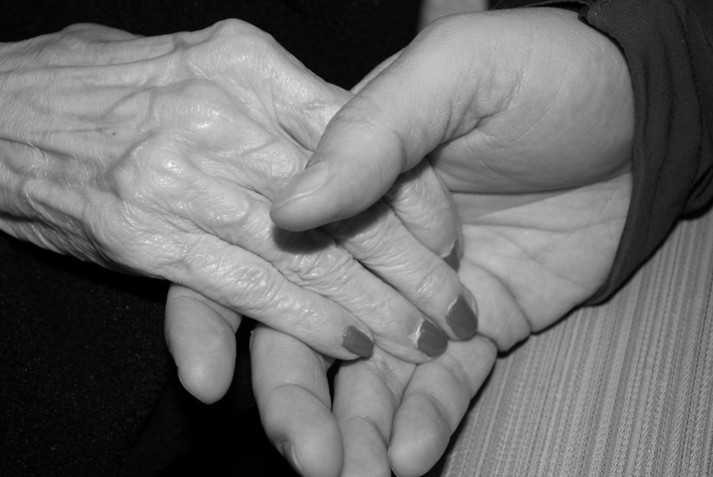Read Time: Approx, 4 Min, 25 Sec

Image Source: Gaertringen from pixabay
Aging is a natural part of life, and while it brings with it wisdom and experience, it can also introduce a variety of physical challenges. As we age, our bones, muscles, and joints undergo gradual changes that can affect mobility, balance, and overall comfort. For many older adults, these issues can interfere with daily activities and reduce their quality of life.
Fortunately, proactive healthcare approaches — including chiropractic care — can help ease these age-related changes. Chiropractic care offers a non-invasive, drug-free option for addressing musculoskeletal problems, promoting mobility, and enhancing overall well-being throughout the aging process.
This article takes an in-depth look at how the body changes as we age, how chiropractic care can support older adults, and why it remains a safe and effective option for managing the unique physical concerns that come with growing older.
How the Body Changes with Age
As the years pass, the human body undergoes significant structural and functional changes. Bones tend to lose density, which can lead to conditions like osteoporosis, making fractures more likely. Cartilage — the cushioning tissue within joints — gradually wears down, leading to stiffness and discomfort, particularly in weight-bearing joints like the hips, knees, and spine.
Another common issue is the degeneration of intervertebral discs, the spongy pads between the bones of the spine. These discs lose water content and flexibility with age, increasing the risk of bulging or herniated discs, which can press on nearby nerves and cause pain, numbness, or weakness (F4CP, n.d.). Muscles also tend to lose strength and elasticity, and balance can decline, making older adults more prone to falls and injuries.
These musculoskeletal changes are often accompanied by chronic pain, reduced flexibility, and diminished endurance — all of which can interfere with daily life and independence.
The Role of Chiropractic Care in the Aging Process
Chiropractic care is a healthcare discipline focused on the diagnosis and treatment of neuromusculoskeletal conditions, particularly those involving the spine. For older adults, chiropractic care can provide significant benefits in managing pain, improving mobility, and enhancing physical function.
A systematic review published in Geriatrics & Gerontology International found that chiropractic care can safely improve mobility, balance, and coordination in older patients, contributing to a reduced risk of falls and injuries (Hawk et al., 2006). These outcomes are especially important, as falls remain a leading cause of injury-related deaths and hospitalizations among older adults.
Chiropractic adjustments involve applying precise, controlled force to spinal joints that have become restricted or misaligned. These adjustments help restore normal joint function and alleviate pressure on surrounding muscles and nerves. Chiropractors working with older adults often use lower-force techniques or instrument-assisted adjustments to accommodate age-related bone changes and medical conditions like osteoporosis.
In addition to spinal adjustments, chiropractic care for seniors frequently includes:
- Soft tissue therapy to relieve muscle tension and promote blood flow
- Gentle stretching and strengthening exercises tailored to the individual’s abilities
- Balance and coordination training to improve stability
- Lifestyle and ergonomic advice to reduce strain and prevent future injuries
Benefits of Chiropractic Care for Older Adults
Numerous studies and clinical reviews highlight the positive outcomes older adults experience through regular chiropractic care. A review published in Chiropractic & Osteopathy concluded that older patients receiving chiropractic care reported significant improvements in back and neck pain, better physical function, and enhanced overall well- being (Wiles et al., 2007).
Some of the most notable benefits include:
- Reduced chronic pain: Chiropractic care is effective in managing musculoskeletal pain, particularly in the back, neck, and joints.
- Improved range of motion and flexibility: By addressing joint restrictions and muscle tightness, chiropractic treatments help enhance mobility, making it easier for older adults to perform everyday activities.
- Better posture: Regular adjustments can help counteract the postural changes that often occur with age, such as stooping or forward head posture.
- Enhanced balance and coordination: By promoting proper alignment and addressing nerve interference, chiropractic care can improve proprioception — the body’s sense of position and movement — reducing the risk of falls.
- Drug-free pain management: Many older adults seek to avoid the side effects and interactions associated with long-term use of pain medications. Chiropractic care offers a natural alternative for managing chronic pain conditions without pharmaceuticals.
Perhaps most importantly, chiropractic care emphasizes personalized treatment plans. Every patient’s needs and limitations are carefully considered, ensuring that each plan is both safe and effective for the individual.
Safety and Important Considerations
One of the primary concerns when treating older adults is ensuring that care is gentle, appropriate, and mindful of age-related health conditions. Chiropractic care has a well- documented safety record when treatments are tailored to the patient’s medical history and bone health (F4CP, n.d.). Chiropractors routinely review factors such as osteoporosis risk, medication use, and prior injuries before beginning treatment.
Low-force techniques and specialized tools can be used in place of traditional manual adjustments when necessary. Additionally, chiropractors work closely with other healthcare providers to coordinate care, ensuring a comprehensive and collaborative approach to managing a patient’s health.
Open communication between the patient and chiropractor is essential. Older adults should inform their provider of any new symptoms, medical diagnoses, or medications that could affect care decisions.
Conclusion
While aging is an inevitable part of life, discomfort, limited mobility, and reduced independence don’t have to be. Chiropractic care offers a safe, effective, and personalized way for older adults to manage musculoskeletal pain, improve mobility, and maintain a higher quality of life. Through gentle spinal adjustments, soft tissue therapy, and customized exercise recommendations, chiropractic care supports healthy, active aging — helping older individuals continue doing the things they love for years to come.
If you or a loved one are experiencing age-related aches, stiffness, or mobility challenges, consider consulting with a chiropractor to learn how care can be tailored to your needs.
Sources Cited
Hawk, C., Cambron, J.A., Pfefer, M.T., et al. (2006). Chiropractic care for older adults: A systematic review of the evidence. Geriatrics & Gerontology International, 6(1), 17–29. https://pubmed.ncbi.nlm.nih.gov/15182879/
Wiles, M.R., Stager, C.E., Kuzel, R.J., et al. (2007). The effectiveness and benefits of chiropractic services for elderly patients: A review of the literature. Chiropractic & Osteopathy, 15(12). https://pmc.ncbi.nlm.nih.gov/articles/PMC3306193/
Foundation for Chiropractic Progress (F4CP). (n.d.). How Chiropractic Care Supports Family Members of Every Age. Retrieved from https://www.f4cp.org/how-chiropractic- care-supports-family -members-of-every -age/
